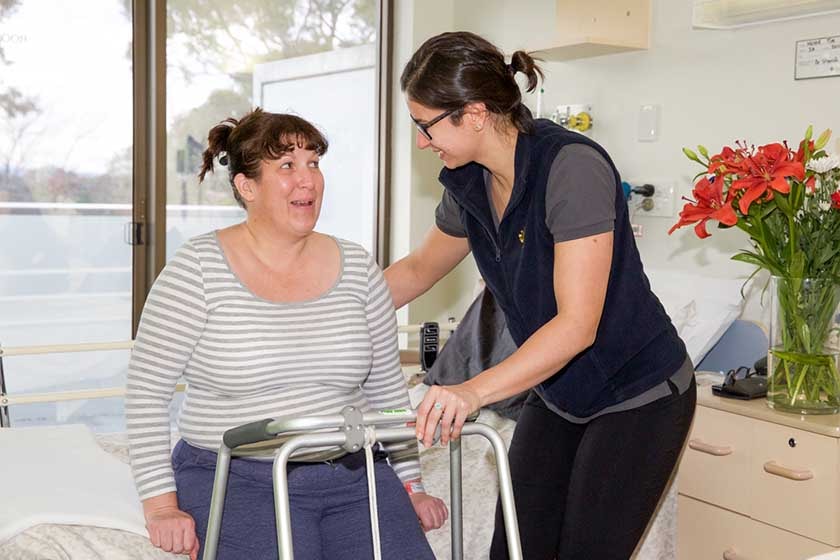Modern hip replacements are actually pretty routine now.
These operations have a very high success rate, with patients usually taking steps the next day, in hospital for three to five days and back to usual activities in six weeks.
So, what has changed?
Over time, every dimension of surgery has improved, giving surgeons better control of the outcomes.
The incision is smaller, the anaesthetic is better, the muscles are not as damaged – all of which result in a decrease in complications.
Contrary to popular belief, weight and age has no impact on recovery.
We are accustomed to treating people who have other health problems as well.
Being overweight or elderly has no significant implications for surgery and your recovery is likely to be the same if you were younger or weighed less.
What are hip replacements?
Hip replacement surgery, also known as arthroplasty, is elective surgery.
It is performed when the hip joint is worn out or diseased and replaced with new, artificial parts.
These artificial parts are called the prosthesis.
Benefits of hip replacement surgery
Having a hip replacement is one of the best operations you can have in terms of relieving pain, increasing mobility and regaining your quality of life.
Many patients say ‘I should have had a replacement years ago.” After time, some of them can’t even tell which hip they had done.
How can you lessen the likelihood of needing a hip replacement in your life?
Keep active and keep your muscles strong.
Joints like regular movement, but avoid excessively overloading them as that can create wear and tear on them.
Any surgical procedure carries risks. Make sure you discuss all possible risks with an appropriately qualified health practitioner.







